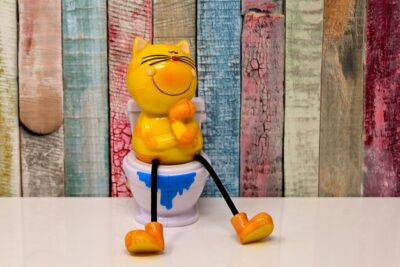



One possible reason why your dog rides a stuffed animal is for comfort and security. Dogs are known to have a strong attachment to soft objects, and a stuffed animal can provide them with a sense of comfort and familiarity. The soft texture and cuddly nature of a stuffed animal can help your dog feel safe and secure, especially when they are alone or in unfamiliar surroundings.
Dogs are playful creatures, and riding a stuffed animal can be a form of entertainment for them. It allows them to engage in a fun and interactive activity, especially if the stuffed animal is large enough for them to ride on. Your dog may enjoy the sensation of riding and may find it amusing to play with the stuffed animal in this way.
Dogs have natural instincts and behaviors that they may exhibit even in domesticated settings. Riding a stuffed animal could be a way for your dog to mimic behaviors they would display in the wild. For example, dogs may ride on the backs of other animals as a way to establish dominance or to assert their position in the pack. By riding a stuffed animal, your dog may be expressing their natural instincts.
Dogs are social animals and form strong bonds with their human companions. Riding a stuffed animal could be a way for your dog to bond with you or other members of the household. They may see the stuffed animal as a surrogate for a person or another animal and use it as a way to connect and form a deeper attachment.
Dogs are known to seek warmth, especially when they are feeling cold or uncomfortable. Riding a stuffed animal can provide them with a cozy and warm surface to rest on. The soft and plush material of the stuffed animal can help retain heat and make your dog feel more comfortable.
Some dogs have a strong prey drive and may exhibit instinctual behaviors such as riding or humping objects. This behavior is often seen in intact male dogs, but can also be observed in females and neutered males. Riding a stuffed animal could be a way for your dog to release pent-up energy or satisfy their natural instincts.
Dogs are known to seek attention from their owners, and riding a stuffed animal can be a way for them to get noticed. Your dog may have learned that riding a stuffed animal elicits a reaction from you, such as laughter or petting, and they continue to engage in this behavior to get your attention.
Just like humans, dogs can experience stress and anxiety. Riding a stuffed animal can be a self-soothing behavior for your dog, helping them to relax and alleviate stress. The repetitive motion and physical contact with the stuffed animal can have a calming effect on your dog's nervous system.
If your dog is not getting enough mental and physical stimulation, they may resort to riding a stuffed animal as a way to entertain themselves. Dogs need regular exercise, playtime, and mental stimulation to keep them happy and engaged. If they are not getting enough of these activities, they may find alternative ways to occupy themselves, such as riding a stuffed animal.
Lastly, riding a stuffed animal could simply be a habit or routine that your dog has developed over time. Dogs are creatures of habit and may engage in certain behaviors out of habit or because they have learned that it brings them comfort or pleasure. If your dog has been riding a stuffed animal for a while, it may have become a regular part of their daily routine.
In conclusion, there can be various reasons why your dog rides a stuffed animal. It could be for comfort, play, mimicking natural behaviors, bonding, seeking warmth, instinctual behavior, attention-seeking, stress relief, lack of stimulation, or simply out of habit. Understanding the underlying reasons behind this behavior can help you better understand and meet your dog's needs.
Leave a Reply
Related posts